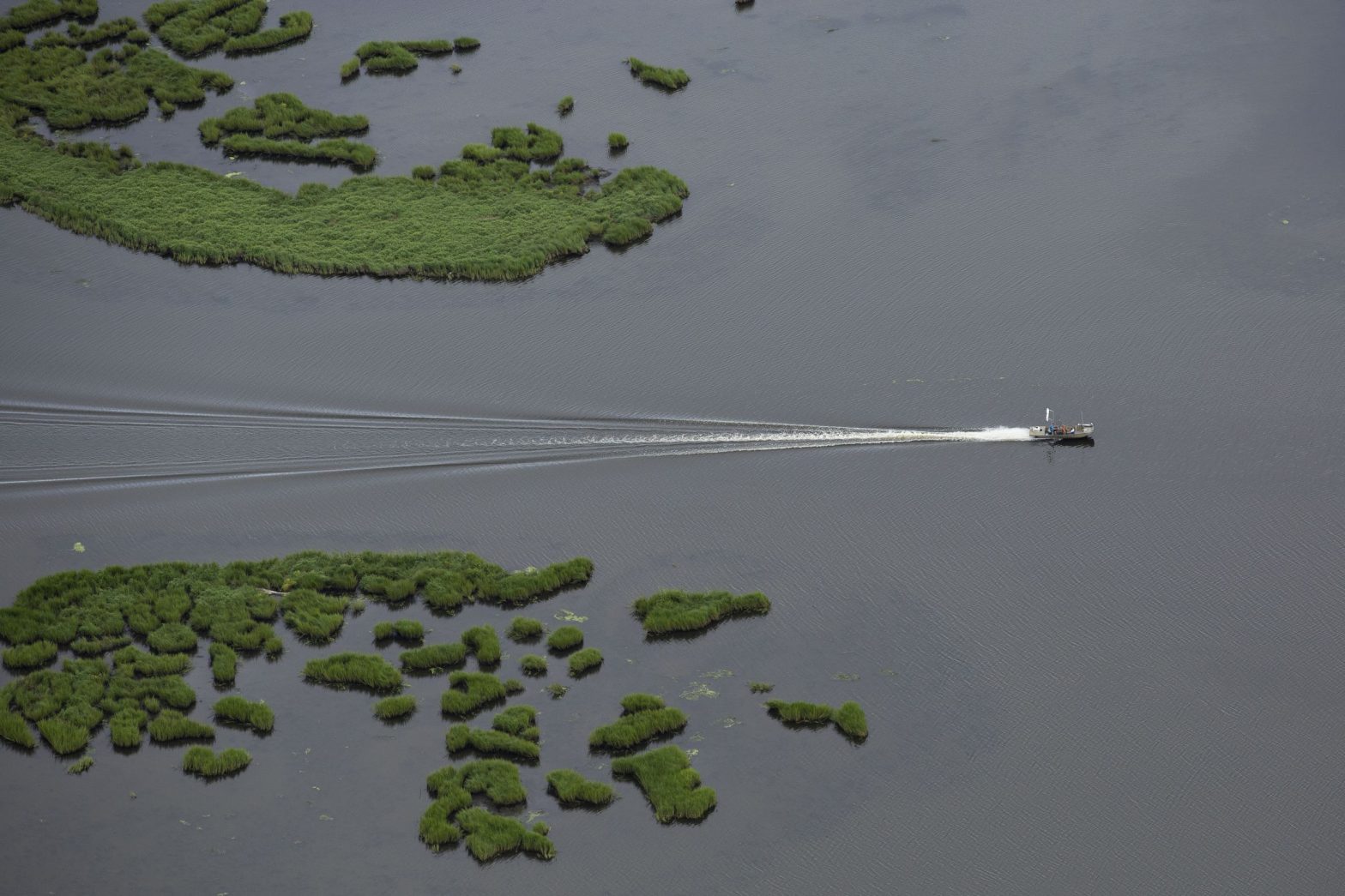/
Sea level rise is a bigger problem for cities where land is sinking.
Share this story
:format(webp)/cdn.vox-cdn.com/uploads/chorus_asset/file/25320200/1163411888.jpg)
America’s coastal cities are sinking, putting more people at risk for flooding than urban planners might have expected with sea level rise alone.
The gradual sinking of land, also known as land subsidence, could cause flooding to reach far more communities than previously anticipated, according to new research published today in the journal Nature. The study looked at 32 major cities along the US shoreline, and forecasted future flooding with climate change. In a worst-case scenario without adequate flood defenses, up to one in 50 people and one in 35 properties in those cities could face flooding during high tide by 2050.
Cities need to prepare for the double whammy, the researchers contend. The problem is twofold — sinking cities and rising seas — so solutions have to be twofold, as well.
“It’s something that is not so far off. And the hazards that we present are very, very realistic,” says Leonard Ohenhen, lead author of the study and a PhD candidate at Virginia Tech. “We really hope that citizens and policymakers alike, every stakeholder in the community discussion, can start thinking about how we respond to these future changes.”
Ohenhen and his co-authors used radar satellite readings to map land subsidence along US coasts. That allowed them to see how land changes over time, and then predict how much further cities can expect to sink in the coming decades. From there, they were able to model the likely extent of future flooding with more accuracy than forecasts that don’t take land subsidence into consideration.
:format(webp)/cdn.vox-cdn.com/uploads/chorus_asset/file/25320134/Screenshot_2024_03_05_at_2.03.37_PM.png)
:format(webp)/cdn.vox-cdn.com/uploads/chorus_asset/file/25320139/Screenshot_2024_03_05_at_2.03.49_PM.png)
:format(webp)/cdn.vox-cdn.com/uploads/chorus_asset/file/25320140/Screenshot_2024_03_05_at_2.03.57_PM.png)
“This represents a large new dataset that will hopefully be useful to these communities for planning their responses to this incoming sea level rise,” says Eric Lindsey, an assistant professor at the University of New Mexico who has studied land subsidence and sea level rise and was not involved in this new paper.
The study’s flood forecast is likely conservative. It accounts for high tides but doesn’t take into consideration flooding from groundwater as sinking land gets closer to the water table. “It’s like sinking in the bottom of a bowl and suddenly you start to get water coming up around your ankles,” says Kristina Hill, program director of the Institute of Urban and Regional Development at the University of California, Berkeley who was not involved in the study.
Some causes of land subsidence are natural, but others are human-made — which means steps can be taken to stop the problem from getting worse. Pumping water, oil, and gas out of the ground, for example, causes land to sink. Quit drilling and pumping, and the sinking slows.
You can even reverse some of the damage by replenishing aquifers. “The solutions to that problem of land subsidence are available in our toolbox and very effective in a short time frame,” says Manoochehr Shirzaei, another author of the study and director of Virginia Tech’s Earth Observation and Innovation Lab.
Since greenhouse gas emissions from fossil fuels are causing climate change, leaving fossil fuels in the ground is also a solution to sea level rise. Sea walls and levees won’t be enough. Even with current defenses in place, an additional 1,389 square kilometers of land along US coasts could be threatened by sea level rise by 2050.
